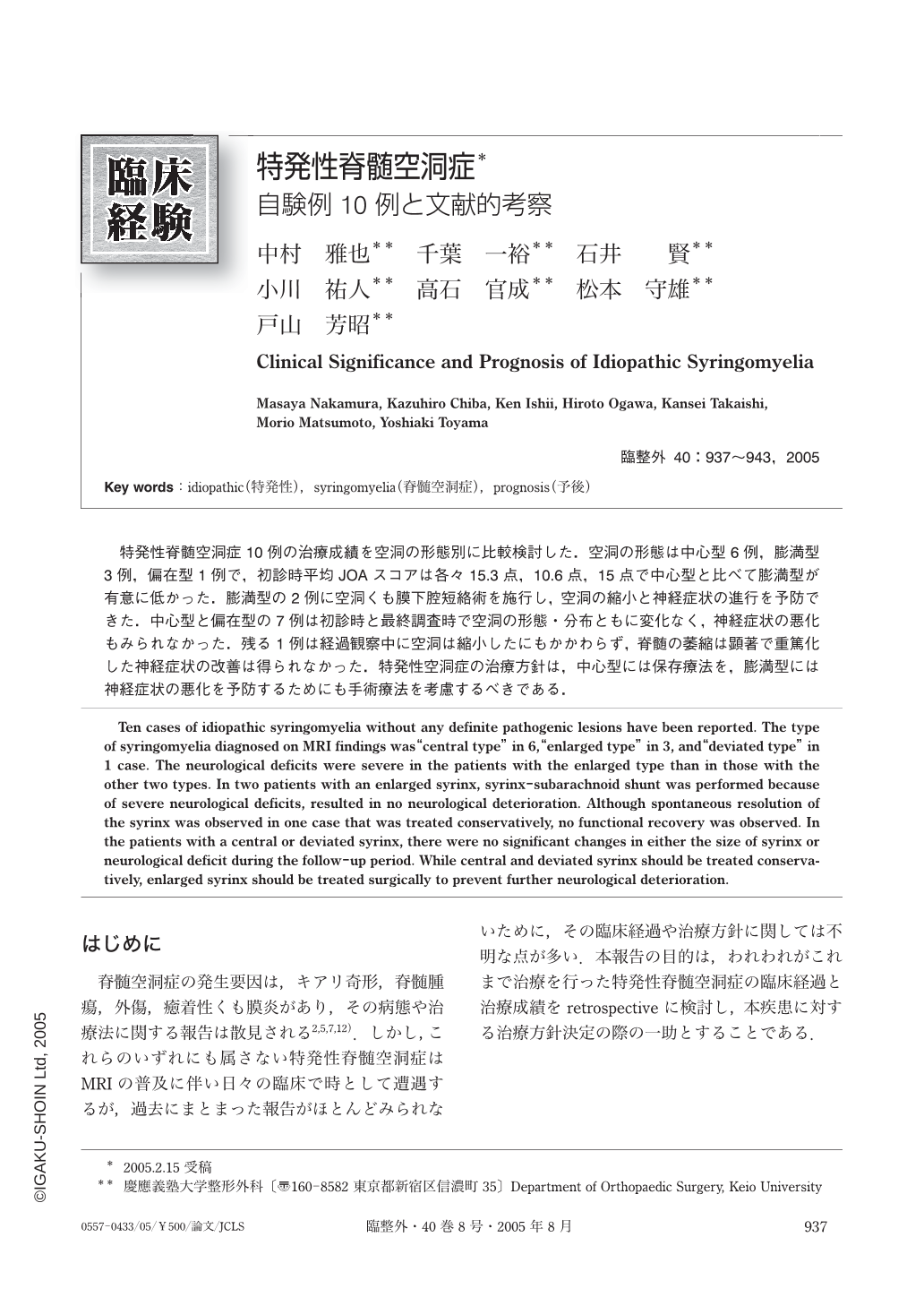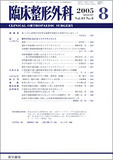Japanese
English
- 有料閲覧
- Abstract 文献概要
- 1ページ目 Look Inside
特発性脊髄空洞症10例の治療成績を空洞の形態別に比較検討した.空洞の形態は中心型6例,膨満型3例,偏在型1例で,初診時平均JOAスコアは各々15.3点,10.6点,15点で中心型と比べて膨満型が有意に低かった.膨満型の2例に空洞くも膜下腔短絡術を施行し,空洞の縮小と神経症状の進行を予防できた.中心型と偏在型の7例は初診時と最終調査時で空洞の形態・分布ともに変化なく,神経症状の悪化もみられなかった.残る1例は経過観察中に空洞は縮小したにもかかわらず,脊髄の萎縮は顕著で重篤化した神経症状の改善は得られなかった.特発性空洞症の治療方針は,中心型には保存療法を,膨満型には神経症状の悪化を予防するためにも手術療法を考慮するべきである.
Ten cases of idiopathic syringomyelia without any definite pathogenic lesions have been reported. The type of syringomyelia diagnosed on MRI findings was “central type” in 6, “enlarged type”in 3, and “deviated type” in 1 case. The neurological deficits were severe in the patients with the enlarged type than in those with the other two types. In two patients with an enlarged syrinx, syrinx-subarachnoid shunt was performed because of severe neurological deficits, resulted in no neurological deterioration. Although spontaneous resolution of the syrinx was observed in one case that was treated conservatively, no functional recovery was observed. In the patients with a central or deviated syrinx, there were no significant changes in either the size of syrinx or neurological deficit during the follow-up period. While central and deviated syrinx should be treated conservatively, enlarged syrinx should be treated surgically to prevent further neurological deterioration.

Copyright © 2005, Igaku-Shoin Ltd. All rights reserved.


